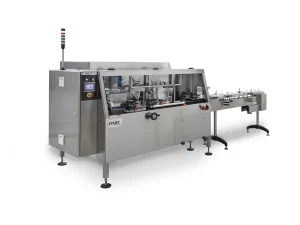From Still to Moving: The Future of Creative Expression with Hybrid Photography

In a world overflowing with visual content, the lines between still photography and video are blurring like never before. Hybrid photography, which combines both mediums, is emerging as a powerful tool for creative expression. It opens up a realm of possibilities that allows us to tell stories in ways that static images simply can’t achieve. Even the smallest details, like how we present our devices with stylish accessories such as blue phone cases, highlight how aesthetics and function can come together seamlessly, much like stills and motion in hybrid art.
As we explore this exciting evolution, we’ll uncover how hybrid photography not only enhances our artistic capabilities but also engages audiences on a deeper level. By merging the beauty of stills with the dynamism of motion, we’re stepping into a future where creativity knows no bounds. Just as creatives balance form and function, professionals in every field also manage complexity, from artistic tools to financial essentials like understanding pay stub deductions. Both remind us that attention to detail, whether in art or in everyday life, shapes the stories we tell and the choices we make.
Overview of Hybrid Photography
Hybrid photography merges still photography and video, transforming how creativity is expressed. This innovative approach allows artists to tell stories more dynamically, appealing to audiences’ emotions in ways that traditional photography cannot accomplish.
In hybrid photography, we combine the strengths of both mediums. Still images capture precise moments, evoking nostalgia and reflection. Video adds movement and sound, creating a richer experience that draws viewers in. This combination enhances engagement, allowing for immersive storytelling that resonates on multiple levels.
Recent advances in technology expedite the growth of hybrid photography. High-quality cameras and editing software enable seamless integration of stills and motion. As mobile devices become more advanced, we see an increase in spontaneous hybrid projects. Applications facilitate creative expression, fostering an environment where anyone can contribute to this evolving art form.
Several distinct techniques characterize hybrid photography. Our examples include cinemagraphs, where motion is seamlessly integrated into a still image; time-lapse photography, capturing the passage of time; and 360-degree video, offering immersive experiences. Each technique invites exploration and innovation, expanding the boundaries of visual storytelling.
The future of hybrid photography appears bright. As we continue to experiment and push creative boundaries, this medium promises to redefine how we perceive and share images. With its capacity for deeper emotional connections and enhanced storytelling, hybrid photography stands as a vital medium in contemporary art.
Evolution of Photography
We observe a significant transformation in photography, marked by the transition from static images to dynamic visual experiences. This evolution highlights the innovative approaches artists adopt to convey stories and emotions.
Transition from Still Images to Moving Pictures
We’ve witnessed a notable shift as photographers incorporate movement into their works. This transition includes techniques such as cinemagraphs, which capture small areas of motion in otherwise static images. Artists utilize video overlays and animated sequences to engage viewers, fostering deeper connections with the narrative. By marrying still imagery with motion, we expand the storytelling capabilities of photography. This hybrid approach allows for richer emotional expression, transforming how audiences interact with visual content.
The Rise of Digital Technology
We benefit from rapid advancements in digital technology that facilitate the emergence of hybrid photography. High-resolution cameras, powerful editing software, and user-friendly mobile applications empower both professionals and amateurs to explore this art form. We now have access to tools that make creating and sharing multimedia content seamless and efficient. As a result, more artists embrace hybrid photography, revolutionizing how we create and consume visual narratives. These technological changes drive the accessibility and growth of this innovative medium.
Benefits of Hybrid Photography

Photo by Anil Sharma on Unsplash
Hybrid photography offers significant advantages that elevate creative expression. By combining still images and moving visuals, we enrich storytelling and engage viewers in innovative ways.
Enhanced Storytelling Capabilities
Hybrid photography enhances storytelling by merging still visuals with motion, allowing us to convey narratives with increased depth. Techniques like cinemagraphs capture moments that flicker to life, drawing the viewer’s attention and creating an emotional connection. Time-lapse and 360-degree photography enable us to present time and space, providing immersive experiences that traditional images lack. These dynamic elements keep audiences captivated, allowing them to feel part of the story and its context. This multi-layered approach to storytelling effectively evokes stronger emotional responses, making narratives more impactful and memorable.
Unique Artistic Approaches
Hybrid photography encourages unique artistic approaches by blending various mediums, enabling creativity without boundaries. We can seamlessly integrate photography with video, sound, and digital effects, resulting in visually stunning pieces that challenge conventional norms. Artists use tools like overlays and animations to enhance their work, producing captivating compositions that intrigue viewers. This expansion of creative techniques not only diversifies artistic expression but also attracts a wider audience. With hybrid photography, we embrace innovation, pushing the limits of traditional forms and crafting works that resonate on multiple sensory levels.
Tools and Techniques for Hybrid Photography
Hybrid photography requires specific tools and techniques that enhance our creative expression. By leveraging technology, we can seamlessly merge still images with motion to tell compelling stories.
Cameras and Equipment
We use a variety of cameras to create hybrid photography. DSLRs and mirrorless cameras offer superior image quality and versatility for both stills and video. High-resolution sensors, such as those above 20 megapixels, ensure clarity in both mediums. Gimbals stabilize our footage, allowing for smooth motion capturing during video segments. Lightweight drones provide aerial perspectives, while smartphones equipped with advanced lenses make hybrid photography more accessible. Accessories like tripods and external microphones enhance stability and audio quality, enabling us to produce professional-grade content.
Software for Editing and Production
Editing software plays a crucial role in hybrid photography. Programs like Adobe Premiere Pro and Final Cut Pro facilitate seamless video editing and integration of still images. We enhance our projects with Adobe After Effects for motion graphics and visual effects. Applications like Photoshop allow us to fine-tune images and incorporate them into videos effectively. Mobile apps, such as LumaFusion and InShot, also offer editing capabilities on the go, streamlining our workflow. Utilizing these tools empowers us to create dynamic, high-quality hybrid content that resonates with viewers.
Challenges and Considerations
Hybrid photography presents unique challenges that require careful attention. We face multiple dimensions in achieving the right balance between quality and creativity while navigating technical limitations.
Balancing Quality and Creativity
Creativity thrives within constraints, yet hybrid photography demands high standards in quality. We aim for striking visuals without sacrificing artistic expression. Maintaining sharpness, color accuracy, and fluid motion is essential. For instance, high-resolution still images should seamlessly transition into video sequences, ensuring visual coherence. Striking this balance enhances viewer engagement and reinforces narrative impact. Our challenge lies in pushing creative boundaries while adhering to technical specs, like frame rates and resolution, which affect the final output.
Technical Limitations
Technical limitations pose significant hurdles in hybrid photography. We encounter issues such as battery life, storage capacity, and processing power. Using high-quality gear requires ample battery and memory space to accommodate extended shooting sessions. Additionally, software compatibility emerges as a concern, particularly when utilizing various editing programs. We must ensure that our tools function harmoniously to avoid workflow disruptions. Identifying and addressing these limitations can optimize our creative process and enrich the final product’s quality. For more insights on this trend, check out Photography Life.



